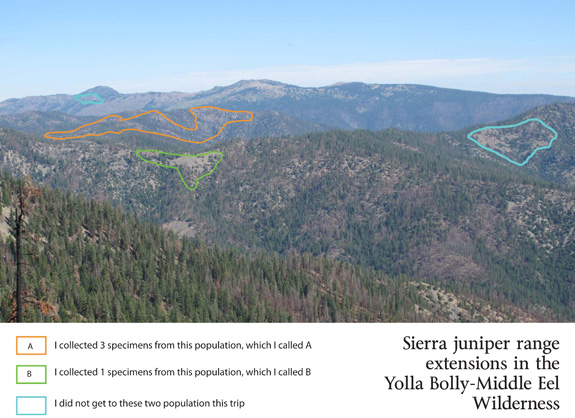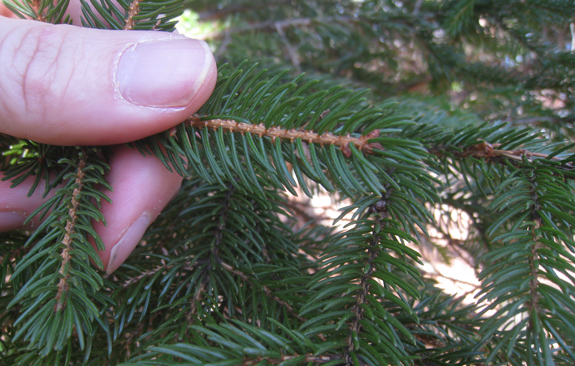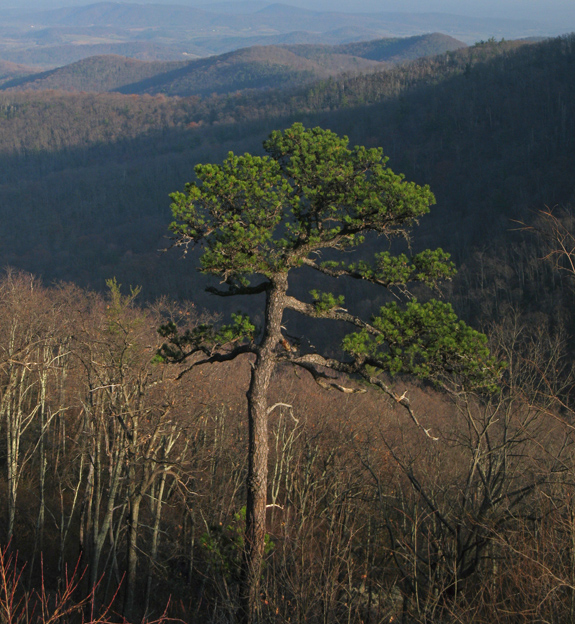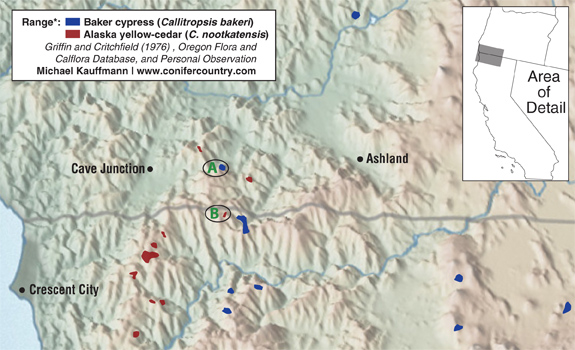Juniperus occidentalis of the Yolla Bolly Explored | Papers w/ Robert Adams
Original Publication DATE: 9/3/2010 1:26:00 PM
Late in the summer of 2009 I re-visited an isolated population of junipers in the Yolla Bolly-Middle Eel Wilderness. The visit was inspired by Robert Adams after he read a blog post of my first visit to the trees. At the time, the population was believed to be Juniperus grandis based on habitat type and other morphological characteristics. After collecting the specimens and sending them to Baylor University for study Dr. Adams published two papers last month on these populations and their relationship to other junipers of the west. He graciously named me as a co-author for my collecting and final editing skills–otherwise the work was all his.
The papers are:
- Geographic variation in the leaf essential oils of Juniperus grandis and comparison with J. occidentalis and J. osteosperma. Phytologia 92(2):167-185.
- Geographic variation in nrDNA and cp DNA of Juniperus californica, J. grandis, J. occidentalis and J. osteosperma (Cupressaceae). Phytologia 92(2):266-276.
While the DNA and essential oil comparisons verified the Yolla Bolly junipers are Juniper occidentalis they did not clarify the relationship of Juniperus occidentalis to Juniperus grandis. Unusual similarities were found between occidentalis populations of Oregon and Northern California and grandis populations of the San Bernardino Mountains. As Dr. Adams states in his conclusions, some questions were answered with the research but more questions remain–further study is needed.
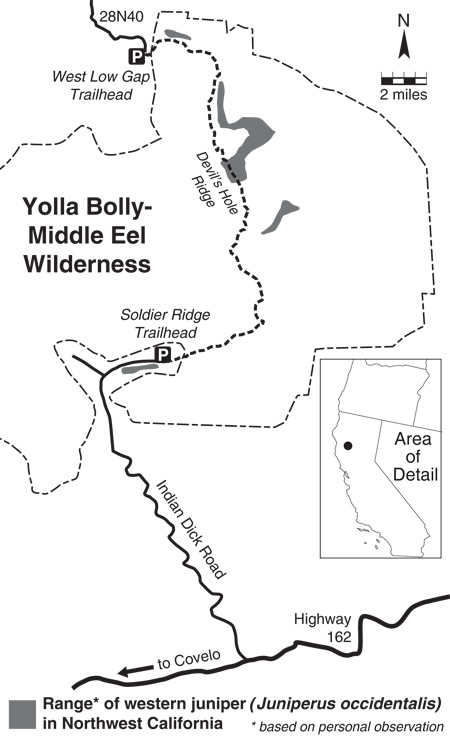
—–
COMMENT:
AUTHOR: Jeffrey Kane
DATE: 9/6/2010 12:36:05 AM
yo dude. congrats on the pub(s).
—–
COMMENT:
AUTHOR: Dewey Robbins
DATE: 5/24/2014 5:10:10 PM
This population extends from Low Gap southwesterly along Jones Ridge nearly to Hayden Roughs as isolated individual. Most of the trees my forestry crew and I found were young regeneration; however, there are a few gnarled fire-scarred relics that are more like shrubs than trees.
—–
COMMENT:
AUTHOR: Michael E Kauffmann
DATE: 5/26/2014 2:58:05 PM
Dewey– thanks for the note. I’ve never been to that area of the Yolla-Bolly, but want to get there. It looks like they extend even further west to the Eaton Roughs. It is private property, but I’d love to get there too.
Stony Man Mountain | Shenandoah National Park
Original Publication Date: 11/26/2010
Botanists and ecologists familiar with the Klamath Mountains are inevitably familiar with the similarities the area has with the southern Appalachian Mountains. It is understood that both regions harbor exceptional plant diversity due to the complex interaction of several factors. They are each ancient mountain ranges that have sustained a similar flora since at least the Cenozoic. These mountainous regions have served as monadnocks–ultimately refuges for plants as populations of species have been eliminated by glaciation and climatic dessication1. Arriving in Virginia in a warm, dry November spell the Blue Ridge Mountains were beckoning me to visit as I peered toward them from the Shenandoah Valley.
I decided to research a mountain top hike that would provide both views and of course–if possible–relict conifers. After finding a publication from 1966 about the conifers of Shenandoah National Park2 mom, dad, and I settled on Stony Man Mountain–the second highest peak in the park at 4010 feet. The Appalachians have an ancient history, being one of the oldest mountain ranges in the world. Stony Man’s summit is composed of greenstones–which were formed 800 million years ago (Ma) by lava flow. With time the rocks changed and were ultimately uplifted 200 Ma and have eroded back to their current height over millenia. The botanical interests–while dependant on the mountain for safe harbor–are a more recent circumstance.
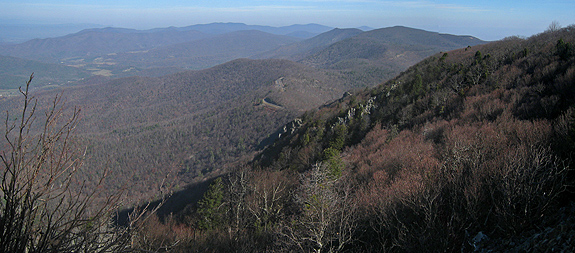
In addition to the wide array of flowering trees, shrubs and annuals that can be found in the Appalachians, several relict conifers survive on this particular mountain top and sporadically elsewhere across the rolling landscape. The conifers are harbingers for the microsites fostered by complex climate and geology which ultimately mimic conditions of a colder time. Canada yew (Taxus canadensis), red spruce (Picea rubens), and balsam fir (Abies balsamea) are found at their southern range extensions in and around the southern Appalachians of Virginia. These trees thrived in the colder climate of the Pleistocene but are now restricted to the highest mountain tops and coolest glades.
Canada Yew | Taxus canadensis
The Canada yew is an understory tree of late successional forests. This is exactly the habitat in which we found it in Shenandoah National Park. This yew of the northeast is ecologically identical to the Pacific yew (Taxus brevifolia) of the Pacific northwest. The small isolated population we found on the summit of Stony Man reminded me of select mountain tops of the Klamath–like Preston Peak. The population here was matted to the earth and often growing beneath and around shrubs on rocky outcrops punished by the elements.
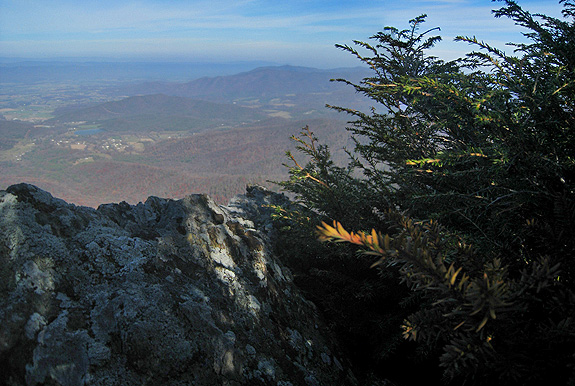
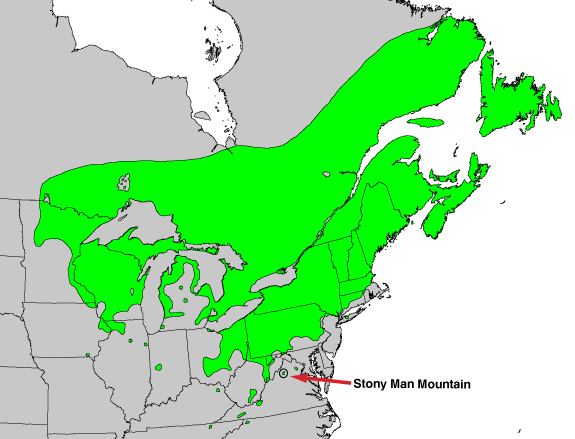
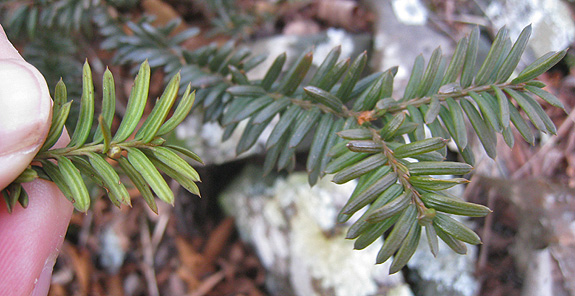
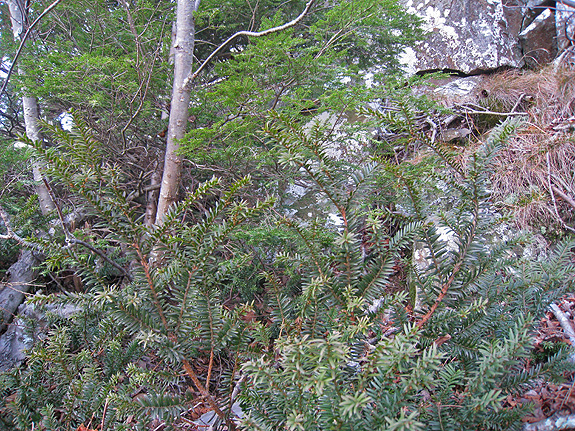
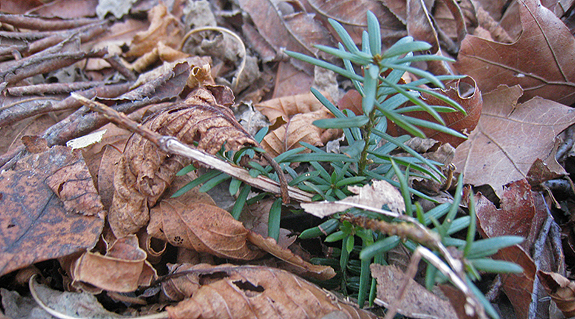
Needless to say, this was an exciting plant to find and learn about...as were those that follow but are discussed in less detail.
A few other conifer highlights included…
Balsam fir | Abies balsamea
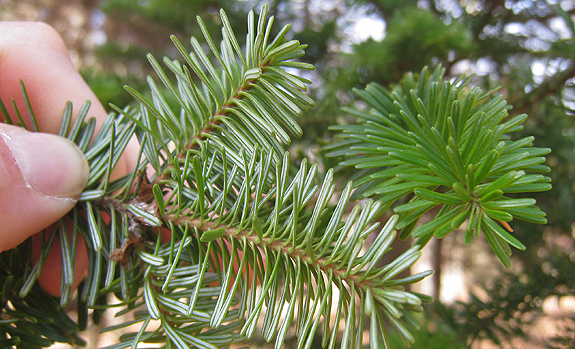
- Conifers.org balsam fir
- Wikipedia balsam fir
- Conifers.org Frasier fir
- Evolutionary history of the two species
red spruce | Picea rubens
pitch pine | Pinus rigida
Other Resources:
Citations:
- Whittaker, R. H. 1960. Vegetation of the Siskiyou Mountains, Oregon and California. Ecological Monographs. V30:3:279-338.
- Mazzeo, Peter M. 1966. Notes on the Conifers of the Shenandoah National Park. Castanea 31:3: 240-247.
- Hils, Matthew H. 1993. Taxaceae. Flora of North America Editorial Committee (eds.): Flora of North America North of Mexico, Vol. 2. Oxford University Press.
- Potter, K.M. et al. 2010. Evolutionary history of two endemic Appalachian conifers revealed using microsattilite markers. Conversation genetics. 11:1499-1513.
- Farjon, Aljos. 1990. Pinaceae: drawings and descriptions of the genera Abies, Cedrus, Pseudolarix, Keteleeria, Nothotsuga, Tsuga, Cathaya, Pseudotsuga, Larix and Picea. Königstein: Koeltz Scientific Books
COMMENT:
AUTHOR: David Fix
DATE: 11/24/2010 2:17:02 PM
Thank you, Michael, for the quick look-see. Jude and I were in the park, as well as over in the Alleghenies in May and also enjoyed Red Spruce. It was fun to see you apply your landscape-parsing and plant skills to a different place. Question. What is that abundant and delicate knee-high fern with the pinnae that barely clasp your fingers as you feel it? But I simply enjoyed it in many spots and don’t need the name…
—–
COMMENT:
AUTHOR: Allison
DATE: 11/24/2010 2:43:10 PM
Great trip, beautiful! This also taught me that monadnock is not just a mountain in southern New Hampshire, but rather my favorite mountain is the name sake for the topographical phenomenon.
Canyon Creek Brewer Spruce | Trinity Alps Wilderness
Original Publication DATE: 9/27/2010
Original Publication DATE: 10/24/2010 With the threat of our second significant storm of the season looming, I packed the truck and headed into a mysterious and isolated region of the Siskiyou Mountains to find two rare groves of trees and enjoy the transition toward winter. The roads are long and lonely leading south from Oregon’s Applegate Valley into the high peaks of extreme southern Oregon and northern California. This region drains the headwaters of the Applegate River where nebulous state borders are crisscrossed by wild mountains, rivers, and the occasional road. This is surely the quintessential ancient meeting ground where rare plants have hidden out for millenia–optimal environmental conditions are fostered with a unique balance of sun, soil, and water. In addition to the rare conifers under discussion one might also encounter Pacific silver-fir, subalpine fir , Brewer spruce, and Port Orford-cedar close by–not to mention the other more common species. One quick side note with respect to the genera I present here (without getting overly detailed)–several classification schemes currently exist for these species. Alaska-cedars have been placed in one of five genera by various sources: Cupressus, Chamaecyparis, Xanthocyparis, Hesperocyparis, and Callitropsis. Needless to say, things are a bit up in the air. While these names have yet to be worked out what has transpired, for now, is one of three scenerios:Siskiyou cypress and yellow-cedar in the Klamath Mountains
